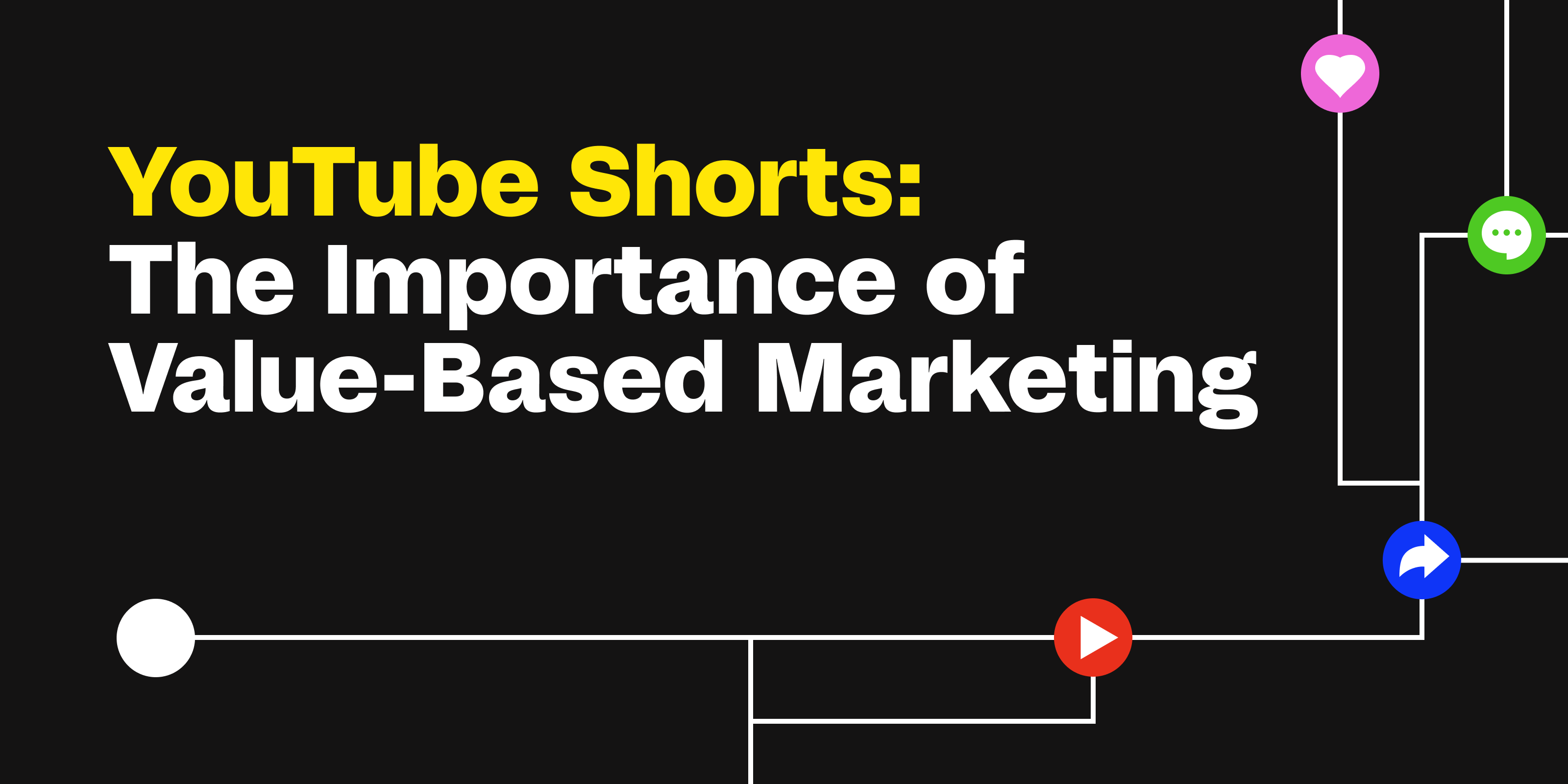It’s no secret that short-form video has become the dominant form of content consumed on social media. In response to the meteoric rise of TikTok, many platforms like Instagram and Snapchat scrambled to incorporate dynamic, full-screen scrolling to support the demand and keep their business models sustainable.
But in the face of a looming ban on Bytedance’s signature platform, many content creators are considering an alternative. YouTube, the premier destination for online video, may have a leg up with a robust suite of tools and baked-in audience. YouTube Shorts have been gaining significant traction over time and make perfect sense for creators already invested in the platform.
YouTube, already the second most popular website after Google, rolled out Shorts to directly compete with TikTok in early 2021. Shorts have a special place on YouTube. They appear on the homepage, in search results, and on the Shorts tab online.
This gives them a lot of visibility to their large audience of over 2.5 billion monthly users. TikTok, on the other hand, has over 1.5 billion monthly users.
YouTube Shorts Overview

What are the key differences between other short-form video platforms and YouTube Shorts?
1. Built-In Audience
YouTube Shorts is part of YouTube, which has over 2.5 billion active users each month, making it a major advantage. This means that Shorts creators have access to a built-in audience that they can potentially reach with their content from the get-go. YouTube creators can even reach global audiences because the platform has users from various regions who speak different languages.
2. Monetization Options
YouTube offers various methods for creators to monetize their shorts content. These include ads, channel memberships, Super Chat, and Super Stickers. This gives creators more flexibility and control over how they earn money from their Shorts. In the past, YouTube has been known for giving creators more freedom to make money. This attracts creators who already have a following on another app and want more flexibility.
3. Licensed Music Library
YouTube Shorts offers a licensed music library of over 250,000 songs that creators can use in their videos. This is a major advantage compared to other short video platforms. Many of them have stricter rules for using music or limited music choices for creators. We’ve all been there where we’re trying to find a song on another platform, and it doesn’t have it, or you’re unable to use it due to licensing. YouTube Shorts really said, “That’s not cash money at all.”
4. Searchability
Shorts are easy to find on YouTube. They show up on the homepage, in search results, and in the Shorts tab. This makes them more discoverable and searchable than other platforms. YouTube is easier to optimize for discoverability compared to other platforms with complex SEO structures.
YouTube Shorts is a great platform for creators as it provides a clear path to success. Not to mention, YouTube has much more experience serving the right content to the right audience.
How to Start Creating YouTube Shorts
Obviously, in order to create YouTube Shorts, you must first create a YouTube channel. However, there are two ways you can go about creating content for this platform.
1. Creating in the Platform
To start creating Shorts using the YouTube app, you’ll need to enable the Shorts camera feature. To do this, go to the YouTube app on your phone, tap the “+” icon, and select “Create a Short.” Use the Shorts camera to record your videos, keeping in mind that Shorts are limited to 3 minutes maximum. You can record multiple clips and stitch them together later if needed.
Then, use the editing tools in the Shorts camera to add filters, text, music, and other effects to your videos. Once you’re happy, upload YouTube Shorts to your channel by selecting the “Upload” button on the Shorts creation screen. Here you can add a title, description, and thumbnail to make the video more searchable and inviting to watch.
2. Uploading Videos Created Off the Platform
If you already have a presence on another short-form video platform, you can easily download those videos (without the watermark, of course) and repurpose them on YouTube Shorts.
You’ll notice that the audience may be a bit different from your previous platform, so you’ll want to experiment with what content works best and then be selective with what you bring over.
Best Practices for Creating YouTube Shorts
1. Use Eye-Catching Thumbnails
Thumbnails are the first thing viewers see before they decide to watch your video. Make sure your thumbnail stands out and clearly conveys what your video is about. Use bold colors, clear fonts, and high-quality images to make your thumbnail eye-catching.
YouTube is usually a more click-bait-y platform, so feel free to use dramatic titles and images to entice people to watch. Don’t forget, the thumbnail and the caption are two different areas you can use to maximize SEO. You can use a different title on each to convey different messages.
For example, the title might be “Three Reasons NoGood is SoGood” and the Thumbnail might say “Check Out the Best Marketing Agency in the WORLD.” I would for sure watch that video.
2. Utilize Trending Topics
YouTube trending topics and delivery methods are going to look different from what’s trending on other platforms. Pay attention to what content is doing well and what content you’re seeing on the homepage. Like any other social media platform, timeliness is on your side. Being one of the first to discuss a big event, news release, or new products in your niche boosts viewership. One of my first viral videos was when I found out Betty White died. Horrible day.
3. Create Engaging and Unique Content
Like any platform, your content is the cornerstone of your success. If you create engaging, entertaining content that provides your audience value, that will win over any strategy.
This value can be through your delivery method, camera presence, or the actual topic of the video. Approach this content like you would any other platform. Does your content provide entertainment, motivation, or education in some way?
4. Engage with Your Audience
Respond to comments, ask for feedback, and encourage viewers to like and share your videos. To understand what your community wants, pay attention to what they like and talk to them about it. Take advantage of the captions and the comment section to ask questions, poll your audience, etc.
How to Monetize Your YouTube Shorts
To get paid with YouTube shorts, you need to first join the YouTube Partner Program (YPP). To be eligible for the YPP, you need to meet the following requirements:
Either…
- Have at least 1,000 subscribers
- Have at least 4,000 watch hours in the past 12 months
OR
- Have at least 1,000 subscribers
- Have 10 million public Shorts views in the last 90 days
Once you meet these requirements, you can apply to join the YPP and monetize your YouTube shorts. To monetize your YouTube shorts, you need to enable ads on your videos. You can do this in your YouTube Studio dashboard by selecting “monetization” and then turning on the “shorts” option.
How much you earn depends on factors like ad length, format, and viewer location. YouTube pays creators a portion of the revenue generated from ads shown on their videos, and the amount can range from $0.01 to $0.05 per view. This means that for 1 million views, a creator can earn anywhere from $10,000 to $50,000, although this is just an estimate, and the actual earnings will vary.
How to Create on YouTube Shorts, TikTok, AND Instagram Reels
How can brands make short videos for different platforms without using too many resources and still being strategic? If you’re creating for one platform, there’s no reason you shouldn’t be using that content on other platforms.
It’s best to start with a primary platform for your content plan and then repurpose that content for posting and experimentation on other platforms. For example, if you’re already creating on TikTok, either save the raw file of the video or download them from TikTok using a tool like Musicaldown, and repost them on YouTube Shorts, Instagram Reels, and even Facebook Reels and Pinterest.
You’ll quickly learn what content does best on each platform, and you can then strategically decide which videos you choose to repurpose on which platforms. Additionally, you can play around with hooks and editing styles on each platform to determine what each audience engages with. A listicle video that uses a green screen may work on TikTok, but that same list in a vlog form showing the different items may work better on YouTube.

Should You Create YouTube Shorts?
Absolutely, especially if you’re already creating content on other platforms. YouTube is a proven platform with enough history to know what they’re doing in terms of the algorithm and monetization. In any case, it’s wise to have a multi-platform presence for any brand to best build a community and have multiple channels for audience reach.
If you need help producing short-form videos that enhance your brand presence and add value to your marketing strategy, we’re here to help.






